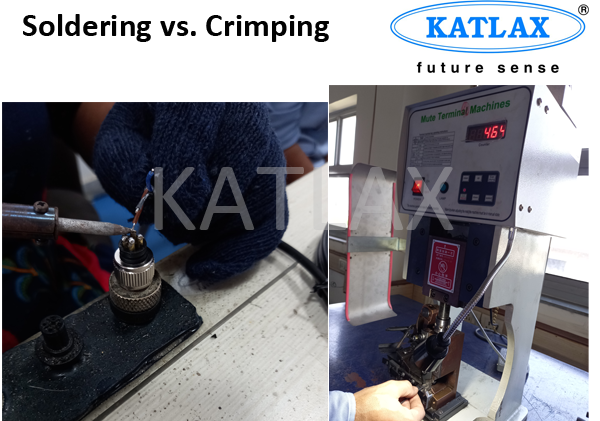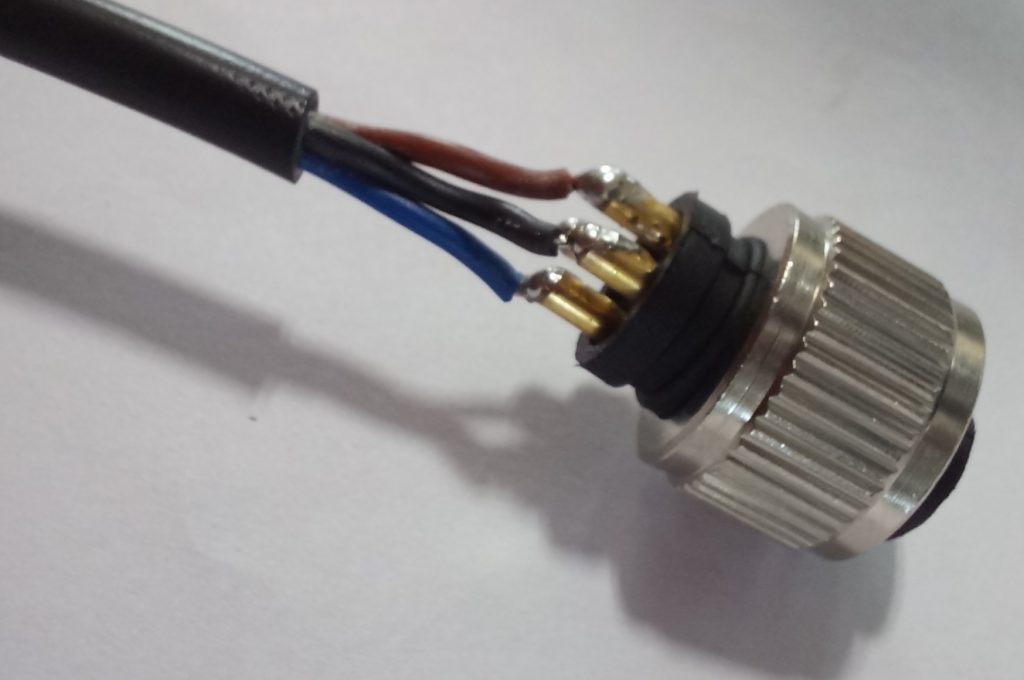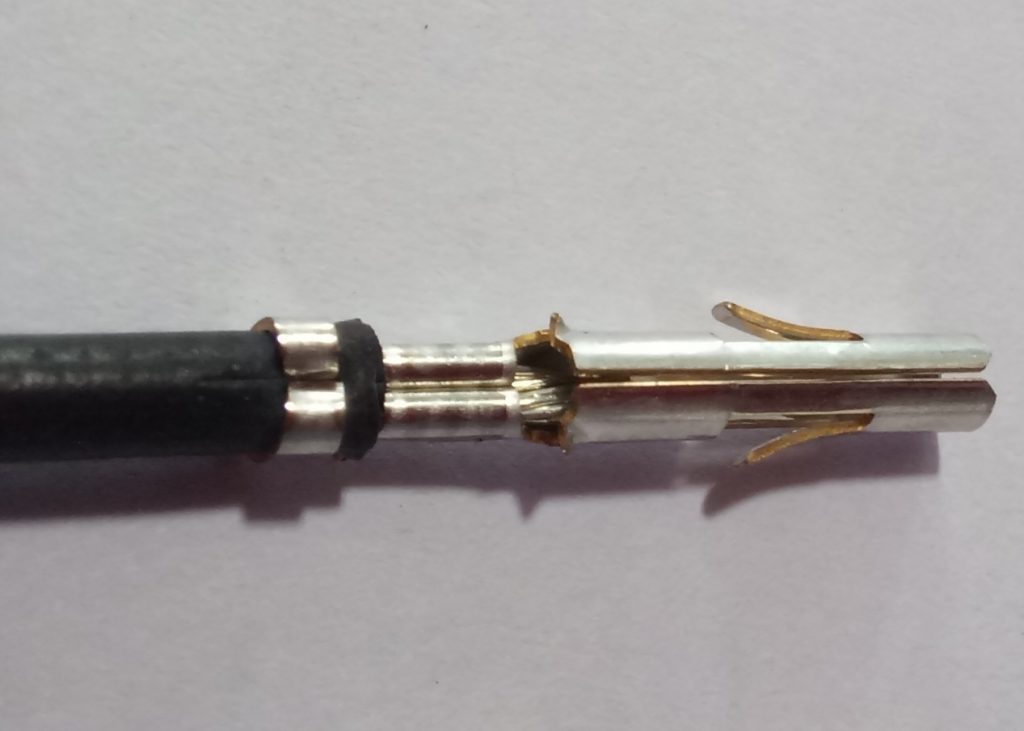
Soldering
Soldering is the more traditional method of wire termination, and it is also the most economical. Soldering involves melting and cooling an alloy composed of lead, tin, brass, or silver into solder cups to bond a wire conductor to a contact. This method is typically recommended for general-duty and industrial applications that require reliable signal and power connections.
Unlike crimp terminations that require specialized tools, nearly any size wire and solder contact can be terminated with a basic soldering kit. Because the tooling is so minimal and the only materials required are solder and flux, there can be significant cost savings. In short, the primary benefit of soldering lies in its affordability.
There are, however, disadvantages to soldering. The soldering process generates heat in the contacts, the connector, and even in the cable. This unavoidable heat generation has the potential to cause problems, especially when the temperature rises above the operational limits of the insert. Additionally, a soldered connection will require a RoHS-compliant solder. This is problematic because many solders contain lead, which is banned by RoHS.
Crimping
Crimping uses the application of pressure to attach a contact to a wire. This method requires a crimping tool, and the connection is made when the handles of the tool are squeezed together to crimp the contact and wire together to form a solid connection. Crimping is recommended for applications that require high reliability in harsh environments.
Crimping has several advantages over soldering. It is a simple, fast process that can be either performed manually or automated via a crimping machine. Crimped connections create an air-tight seal between the connector and the cable, resulting in long-lasting, reliable connections that are protected from environmental conditions such as moisture, sand, dust, and dirt. When a skilled technician is in charge of the crimping process, the connection may result in a highly durable “cold weld.” Crimping is also more consistent than soldering, which can vary according to the method used or the skill level of the technician.
However, crimping does require tooling that is specific to the type of contacts used, which can get expensive. And the crimping process must be performed correctly to achieve a reliable connection.


